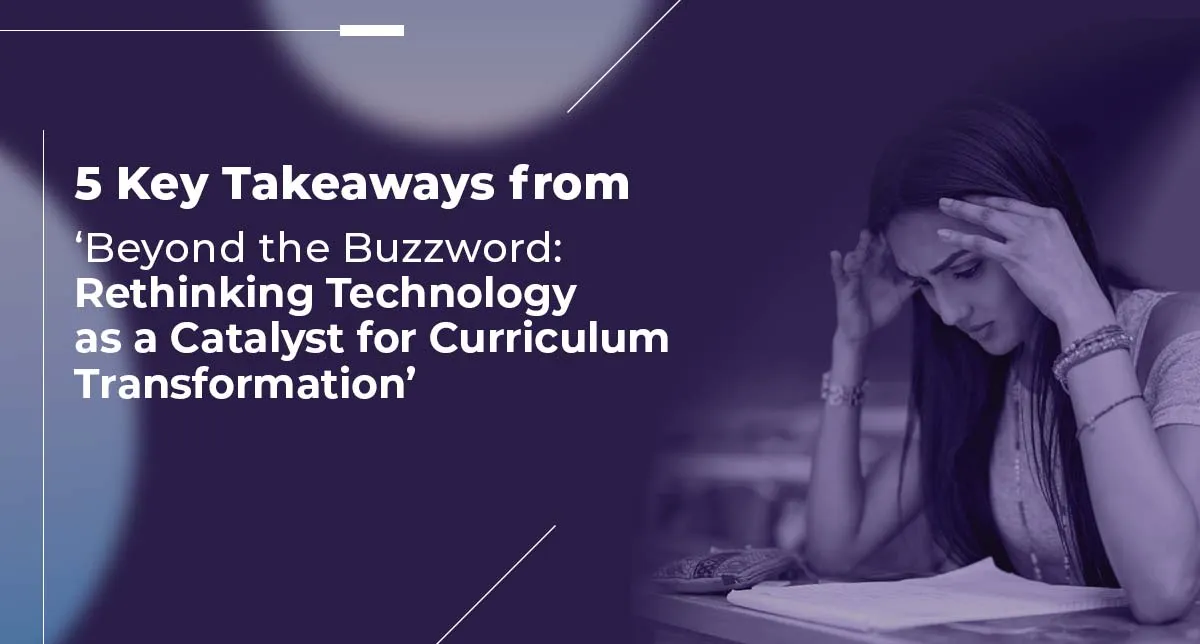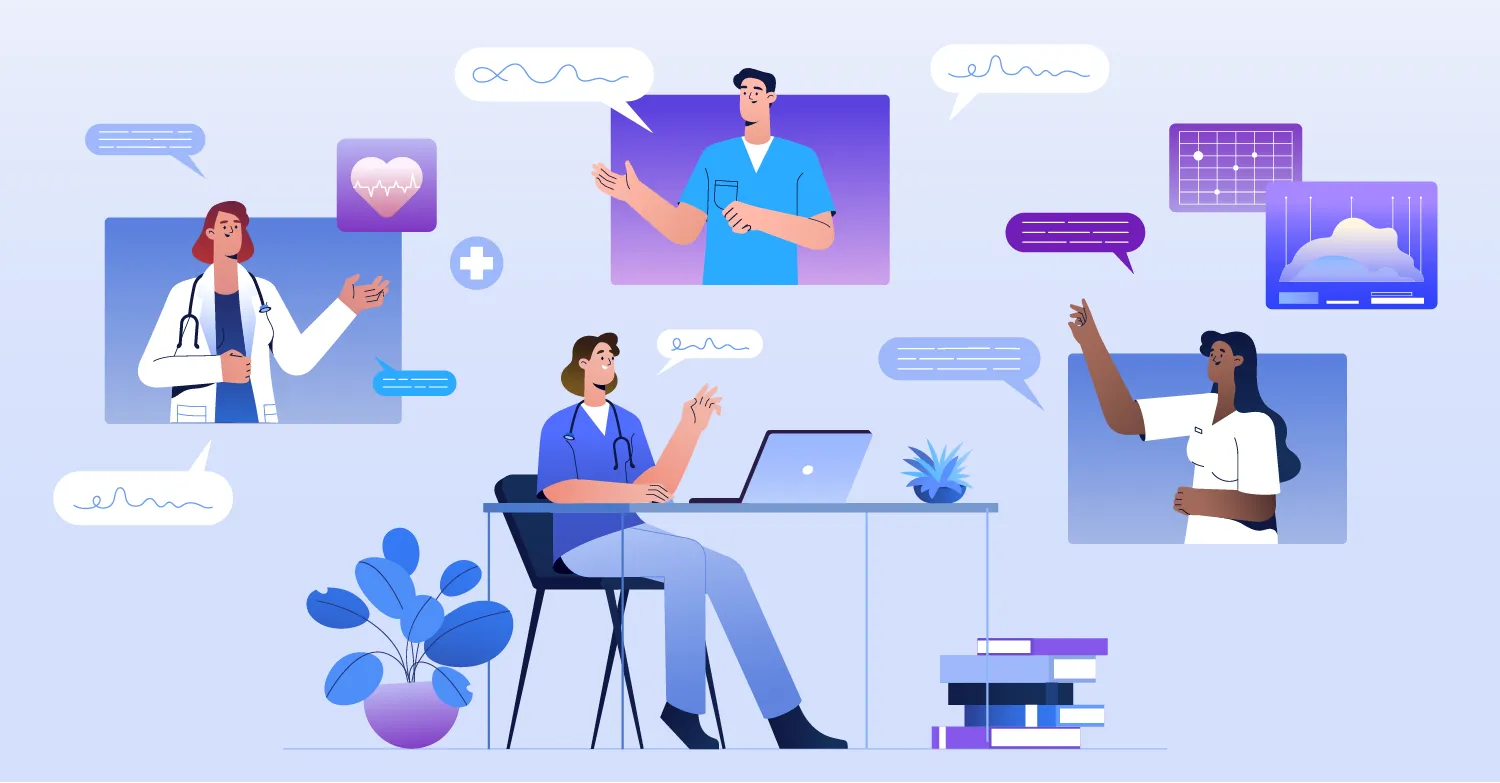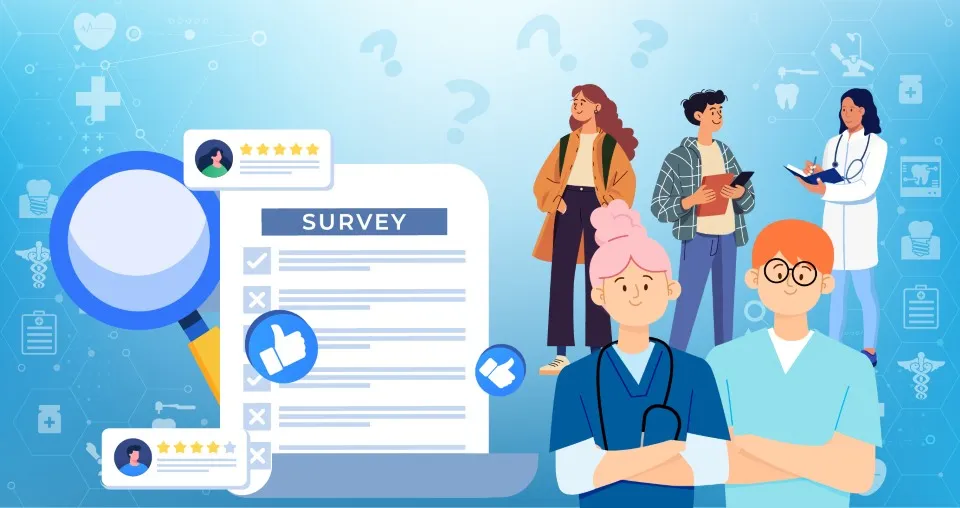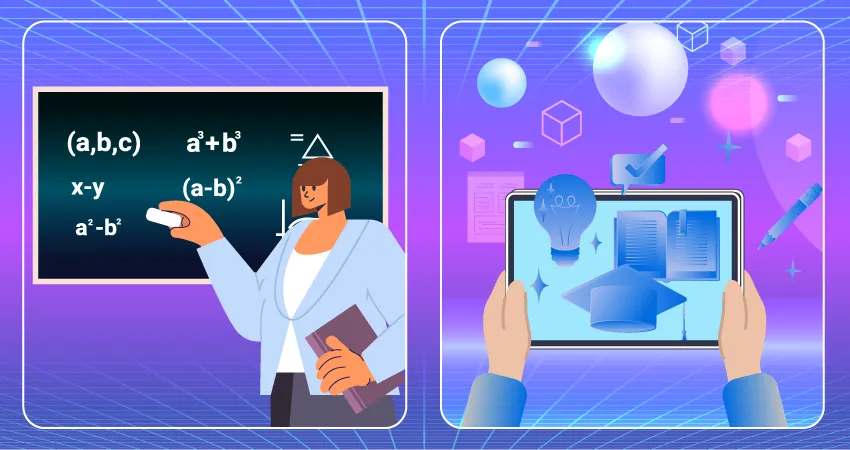5 Key Takeaways from ‘Beyond the Buzzword: Rethinking Technology as a Catalyst for Curriculum Transformation’

Digital transformation in higher education isn’t optional. Faculty workloads, student expectations, and evolving toolkits make the adoption of high-quality learning technology an essential to delivering effective learning. But for learning technology to deliver lasting value, it needs work for everyone involved. That means engaging faculty from the outset, aligning with accreditation standards, and ensuring students can access tools that support wellbeing, independence, and long-term success.
That was the focus of Beyond the Buzzword: Rethinking Technology as a Catalyst for Curriculum Transformation, a recent panel webinar hosted by Immersify and moderated by Immersify CEO Chloe Barrett. Featuring insights from expert panellists Dr. JoAnn Gurenlian, Director of Education, Research, and Advocacy for the American Dental Hygienists Association and Dr. Brett Kessler, President of the American Dental Association, the conversation surfaced several key takeaways for institutions navigating change.
Read on to explore five hand-picked highlights from this wide-ranging discussion, including:
- Why tight curricula demand low-friction, CODA-aligned tech
- How to move beyond one-time faculty training and encourage real engagement
- Why mental wellbeing and safe failure belong in any digital strategy
- What flipped classrooms teach students about long-term learning
- How equitable access starts with the device in your pocket
Prefer to watch the full panel discussion? You can view the entire webinar recording below before diving into the five takeaways.
Curious How These Themes Apply to Your Program?
Takeaway 1: Digital Transformation in Higher Education Must Be Surgical
Technology that adds complexity, extends time-on-task, or requires additional hours of training simply won’t survive the realities of dental education. Dr. Gurenlian pointed to structural curriculum constraints, ranging from accreditation pressures to inflexible curricula, as the dominant context in which any educational technology must operate.
Our curriculum is jam-packed with information... And it's complicated by the fact that we're working to make sure we achieve the Commission on Dental Accreditation, or CODA, standards for our learning.
Dr. Gurenlian went on to describe dental curricula in terms of a rigidity that leaves very little time for educators to:
- Learn new technologies
- Decide how to integrate them
- Ascertain whether they align with, or enable alignment with, CODA standards for dental hygiene and dentistry
- Figure out how students can use them to improve their learning experience
Coupled with this, as Immersify CEO Chloe Barrett noted from the outset, is the reality that, for many schools, ‘technology is often seen as just another thing’: an extra burden, rather than a strategic means to promote digital pedagogy.
That attitude can only be magnified by the many faculty members (and occasional students) who, as Dr Gurenlian reminded the panel, aren’t necessarily tech-savvy individuals. For these people, curriculum constraints combine with uncertainty around their ability to use the technology they’re presented with.
GET THE FULL BREAKDOWN ON MERGING LEARNING TECH WITH CURRICULUM STRUCTURES | ‘Learning Technology and Curriculum Delivery: Help or Hindrance?’
How Do Digitally Transforming Institutions Accommodate Time-Poor, Tech-Averse Teachers?
The takeaway here is clear: not all learning technology leads to technology-enhanced learning. For institutions exploring new learning tools, these concerns crystallise into a set of questions:
- Does this tool map seamlessly to our existing program?
- Is its content aligned with CODA standards?
- Is the tool familiar enough that tech-averse students and educators can use it without friction?
 Takeaway 2: Faculty Development in Higher Education Requires Collaboration
Takeaway 2: Faculty Development in Higher Education Requires Collaboration
Professional development is a prerequisite for any new technology rollout, but it’s rarely enough on its own. As Dr. JoAnn Gurenlian put it, truly understanding and engaging with learning tools works best when faculty feel safe to experiment and learn from each other.
I would be thrilled if junior faculty wanted to experiment with technology… We can learn from each other. If somebody’s excited about a new learning technology… that’s a great opportunity for us to have faculty meetings where we talk about how we see it being applied, how we calibrate each other.
Rather than positioning training as a one-time rollout, Dr. Gurenlian advocated for an ongoing, collective model of engagement: collaborative sessions, shared calibration, and deliberate disruption of entrenched habits. Her stance was firm:
‘The worst words in the English language are: “This is the way we’ve always done it.”’
This tendency toward resistance can, as Dr. Kessler observed, sometimes surface among long-tenured educators.
I’ve seen a great shift of dental schools away from the ‘hobby professors’... You know, they practice for 30 years, and now they want to give back half a day a week. But they come in and say, 'I know you’re supposed to teach it this way, but I'm going to tell you how I do it.'
Dr. Kessler went on to argue that changing that dynamic comes down to a mixture of calibration and coordination between faculty and leadership alike.
MORE ON FACULTY-FIRST EDTECH APPROACHES | ‘Embracing Digital Transformation in Healthcare Education Without Replacing Traditional Teaching’
How Do You Place Faculty at the Heart of Tech Adoption?
There’s a pattern at the heart of these reflections: the success of any learning technology rests on both faculty understanding and whether that faculty has been given the conditions to adopt it on their own terms. That means:
- Making space for junior faculty to lead innovation
- Ensuring leadership and structural expectations are aligned
- Structuring training around shared reflection and collaboration
 Takeaway 3: Digital Pedagogy Can Support Student Mental Health
Takeaway 3: Digital Pedagogy Can Support Student Mental Health
When we talk about learning outcomes in dental education, we often mean clinical readiness, knowledge retention, or exam performance. But panelists in this discussion made the case for a broader definition: one that includes student mental health, resilience, and confidence as vital to both engagement and achievement.
Dr. Kessler was especially direct in describing the emotional toll the discipline takes on students:
‘These are the smartest of the smart… but they’re stressed. And the easier they can learn things, the easier it is for them to deal with their stresses.’
Dr. Gurenlian echoed this theme from the perspective of faculty who see student stress firsthand:
‘We have some of the highest levels of anxiety and depression among our dental hygiene and dental students that we’ve ever seen before.’
These sentiments are a reminder that effective learning technologies have a role to play as a buffer: something that can build grace into the learning process by enabling self-paced repetition, safe failure, and incremental confidence. When students are struggling, the last thing they need is an additional chore. But, by the same token, it’s never been more important to supply hard-pressed learners with tools they can lean on in difficult moments.
Dr. Gurenlian emphasized the importance of this support-centered perspective on learning technology:
Students need learning tools that make them feel successful… that reduce that learning angst… that let them track their progress… and help to address some of that worry about 'do I really understand this?'.
Mental wellbeing isn’t a bonus outcome. In fact, it’s better understood as a prerequisite for engaged learning, clinical readiness, and long-term persistence. Tools that reduce cognitive overload, normalize imperfection, and provide behind-the-scenes reassurance are as essential as any rubric or module.
Are You Weighing Student Stress in Your Digital Decision-Making?
At Immersify, we often point to the value of failing safely when it comes to keeping clinical mistakes confined to AR simulations (and that remains important). But failing safely doesn’t just apply to patients: it’s also a means of protecting student wellbeing as they navigate the demanding combination of theoretical knowledge and clinical application. Failing in a pressure-free environment can help to reduce the stresses that characterize so many dental students’ educational experiences.
For institutions, these concerns boil down to a key set of questions to ask whenever new learning tech enters their radars.
- Does our current technology support student wellbeing or quietly add to their stress?
- Are we giving learners tools they can trust when instructors aren’t in the room?
- Are we helping students build confidence, or just asking them to survive?
UNLOCK MORE INSIGHT ON DENTAL SIMULATION AND FAILING SAFELY | ‘Simulation Spotlight: Local Anesthetic in Dental Education Q&A’
Takeaway 4: Flipped Classrooms Build Self-Directed Learning Habits
When it’s thoughtfully applied, the right learning technology can do more than enhance student engagement or wellbeing. It opens the door to different ways of teaching (and, more importantly, different ways of learning). For Dr. JoAnn Gurenlian, the flipped classroom model stood out as a prime example of that shift.
When you flip the classroom and... have them utilize technology to showcase their learning, that’s really a wonderful way to help students bridge the gap between the traditional learning models and some of the newer learning models. A flipped classroom [is]... an opportunity to go from the lowers level of Bloom’s taxonomy, if you will, where we’re identifying something and explaining something, to... higher-level thinking.
Flipped classrooms allow students to preview complex material in a low-pressure setting, return to it on their own terms, and come to class ready to engage in targeted discussion and critical thinking.
But the power of flipped learning isn’t limited to the classroom. As Dr Gurenlian pointed out, ‘students have to understand their responsibility for their learning’. And taking on that responsibility has practical benefits for students that Dr. Kessler hinted at when discussing the need for learning beyond graduation.
The dentist or hygienist they are when they first graduate is nothing compared to what they are five, six years down the road: they need to keep growing.
That’s where flipped and flexible learning models shine. Because they shift control to the learner, they build the self-directed learning habits that define successful practitioners. When students are given the opportunity to take charge of their learning from the start, you transform your program into a student-centered learning environment, while leaving them prepared to keep learning long after formal instruction ends.
FIND OUT MORE ABOUT FLIPPED CLASSROOMS | 'Education Leaders: Should Your Institution Adopt a Flipped Classroom Model?' | '5 Benefits of Flipped Learning for Universities and Colleges'
Can Your Learning Tools Teach Students How To Learn?
If flipped and simulation-based models are going to deliver long-term value for students, the underlying platform needs to support more than novelty. Institutions should ask:
- Does this platform give students agency and control over their learning?
- Can it be used to build not just short-term competence, but lifelong learning skills?
- Does it give faculty the opportunity to offer more targeted, value-driven teaching during contact hours?
Takeaway 5: Equitable Access to Technology in Education Begins with Mobile-First Tools
When institutions consider equity, they often think in terms of curriculum, assessment, or admissions. But the panel reminded us that true equity in learning starts with the tools students use.
Dr. JoAnn Gurenlian was clear on this point: just because students have smartphones doesn’t mean they have laptops, tablets, or all the hardware many learning platforms demand.
We like to think everyone [has access]. Like, who doesn't, right? But at the same time, there are students who struggle [with] the technology demands available to them while they’re in a dental hygiene or a dental program.
She emphasized the need to consider accessibility upfront when evaluating new tools, and called out Immersify as an example of good practice:
I know that with Immersify you can use your phone. I do it all the time… That’s something that's more readily available. Not everything has that capacity.
In short: equitable access to technology in education starts by leveraging the tech students already have.
WHAT’S THE LINK BETWEEN ACCESSIBLE LEARNING AND EDUCATION 4.0? READ ON | ‘How Education 4.0 is Transforming Healthcare Learning’
Is My Learning Infrastructure High-Tech but Low-Access?
When evaluating educational technology, institutions keeping an eye on fair access will benefit from reflecting on the following questions:
- Does this platform meet students where they already are?
- Can it be used without requiring costly or exclusive hardware?
- Is this tool able to support the needs of diverse student populations?
More on Curriculum Integration
Keep ReadingConclusion: From Insight to Action
Across all five takeaways, there's a key throughline: learning technology isn’t necessarily a cure-all. But when it’s intentional, accessible, and aligned with real learning needs, it can transform both teaching and outcomes.
From reducing pressure on students to empowering faculty collaboration and strengthening lifelong learning habits, the right platform will enhance the educational experience for under-pressure students, time-poor teachers, and outcome-focused administrators alike.
Whether you're mapping next year’s modules or revisiting your institution’s digital strategy, now’s the time to think differently about how, where, and why you use technology in dental education.
Frequently Asked Questions on Dental Digital Transformation
CODA standards are the accreditation requirements published by the Commission on Dental Accreditation that dental hygiene programs must meet to maintain approval. These standards define curriculum content and structure, which means dentistry-focused learning technologies need to be evaluated in terms of how they align with CODA's mandates.
Digital transformation in higher education refers to the adoption of digital tools, platforms, and pedagogies. The goal of these transformations is typically to improve learning and teaching, often alongside program delivery. As our expert panel noted, this shift must align with accreditation standards, faculty capacity, and the realities of existing curricular structures to stand the best chance of succeeding.
A digital strategy for higher education is a coordinated plan for using technology to improve teaching, learning, and operations. Our panel emphasized that effective digital strategies need to balance innovation with accreditation demands, faculty support, and student access (and that, when done right, they can unlock exciting and innovative pedagogies).
Ready To Apply These Takeaways to Your Institution?
Reach out to our expert team to discuss the benefits of Immersify’s friction-free alignment with your program.
This article was reviewed for clinical accuracy and educational relevance by Dr. Martin Ling, a GDC-registered dentist and Fellow of the Higher Education Academy.
Join our mailing list
Get the latest updates on immersive learning, industry trends, and resources delivered straight to your inbox.



